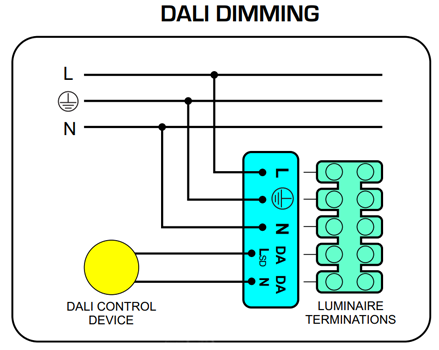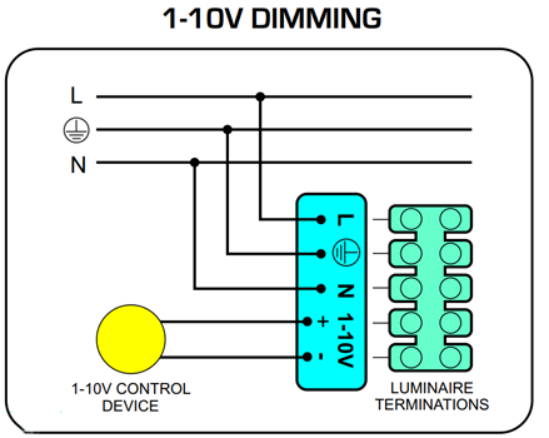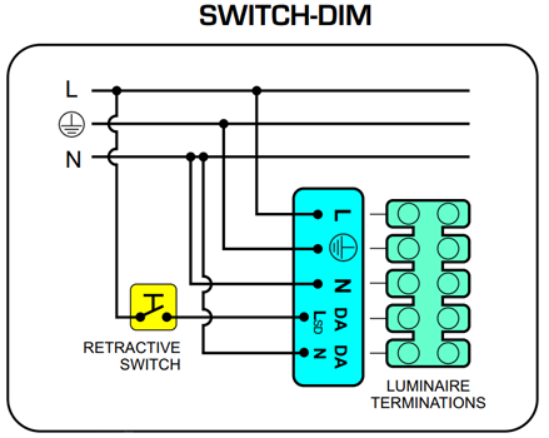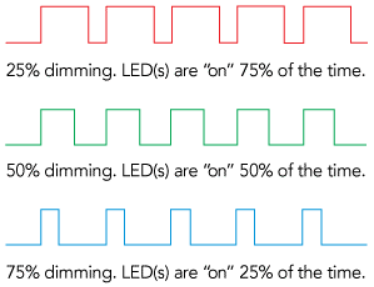If the driver is separate from the lighting fixture, or is accessible within it, then the best way to dim the LEDs will be by using a dimming driver. This is how most dimming is achieved in commercial and industrial installations.
If desired, the driver can be the dimming type, performing the twin functions of a driver (transforming the incoming power from 120V AC to 12-24V DC) and a dimmer.
A dimming driver performs two functions: it is both a driver and a dimmer.
As a driver it converts the mains AC supply (typically 120V, 60Hz) to 12-24V DC. This is necessary because LEDs don’t operate on mains. LEDs work at low voltages on direct current.
As a dimmer it raises and lowers the amount of electrical energy flowing out to the LEDs. There are two mains ways that a driver does this - pulse width modulation (PWM) or amplitude modulation (AM) - and these are discussed below. However, if a driver uses PWM or AM is generally of little interest to an installer or specifier. They are internal to the driver and have little or no effect on the end user and the quality of the dimmed light they will see. The more important question for the specifier and installer is how the driver is to be instructed to make the LEDs brighter or dimmer.
There are several ways to control a driver, or instruct it what to do. In each case the driver will require a continuous supply of mains power plus a control signal to tell it what to do. The most common methods of controlling a driver are as follows:

This is how a DALI driver would normally be wired.

This is how a 1-10V driver would normally be wired.

This is how a driver would be wired for switch dim, touch dim or push dim control.
HOW A DIMMING DRIVER WORKS
A dimming driver has two functions:
Examples of dimming drivers as would commonly be used in or alongside commercial/industrial LED light fittings. Both these units perform dual functions; they are both a driver and a dimmer.
To function as a dimmer they both have extra terminals where control wires can be connected to provide a dimming control signal.
Drivers may use either of two techniques to reduce the amount of energy flowing to the LEDs.
Pulse width modulation (PWM)

An LED driver that dims by using PWM is switching the power to the LEDs on and off. The longer the “on” pulses and the shorter the “off” pulses, the brighter the LEDs will appear to be, and vice versa. Provided this takes place at a frequency greater than about 200Hz any flickering will not be visible to the human eye and the brain will average the perceived level of brightness.
Amplitude modulation (AM). Here the driver is simply increasing or decreasing the output current to the LEDs. The risk of flicker is eliminated, but some LEDs change colour slightly if their current is altered, especially at low levels.
Some LED driver manufacturers use a combination of PWM and AM to achieve an optimal performance.